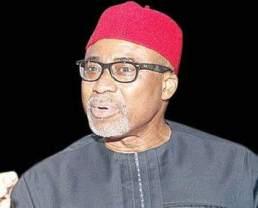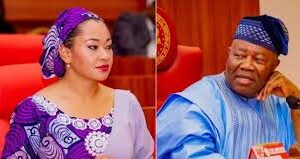2
ADE ADESOKAN
The frequency and sophistication of these attacks have escalated alarmingly. In November 2024, the government disclosed it had spent about N8.8 billion to repair transmission towers vandalised across the country. The Managing Director and Chief Executive Officer of TCN, Suleiman Abdulaziz, explained that between January 13 and November 27, 128 transmission towers were destroyed by vandals or bandits across the country. Some of these were not mere opportunistic theft but coordinated attacks using explosives, as evidenced when dynamites were used to bring down towers and lines on the Shiroro-Mando-Kaduna transmission lines, plunging almost the entire northern part of the country into darkness for over two weeks.
In response to these challenges, the Ministry of Power has allocated N8 billion in its 2025 budget specifically for advocacy, education, enlightenment and provision of technology to protect power infrastructure. According to the Minister of Power, Adebayo Adelabu, the fund will be used to enlighten Nigerians on the importance of protecting and taking ownership of power infrastructure and other national assets. More controversially, Adelabu has recommended the death penalty for persons who steal power infrastructure, reflecting the severity of the problem’s impact on national development.
Making stable electricity achievable within five years requires a multipronged approach. Nigeria must rapidly expand its generation capacity through a balanced mix of conventional and renewable sources. The country’s abundant solar resources remain largely untapped, with potential for 427 GW of solar capacity. Strategic investments in solar farms across the northern states could add significant capacity while addressing regional power disparities.
Simultaneously, the transmission network requires urgent modernization and expansion. The recent restructuring of TCN provides a foundation, but substantial investment in both NISO and TSP is needed to realize the potential benefits of the separation. The willing-buyer-willing-seller models create promising pathways for industrial clusters and high-consumption zones to secure dedicated power supply arrangements.
The distribution segment presents perhaps the greatest challenge, requiring technological upgrades to reduce technical losses and comprehensive metering to address commercial losses. The current estimated 50% loss rate between generation and end-users represents an unsustainable inefficiency that drains the sector financially. Electricity tariffs across ECOWAS member states vary due to differences in generation costs, subsidies and infrastructure investments. As of March 2025, Nigeria’s electricity tariff for Band A consumers— those receiving a purported minimum of 20 hours of electricity per day—was ₦225/kWh, while other ECOWAS countries have tariffs ranging between $0.10 to $0.30 per kWh, depending on their energy mix and regulatory frameworks.
The cost of 1 kWh of electricity directly impacts the feasibility of constant power supply in Nigeria. Higher tariffs can discourage consumption, while lower tariffs—if not cost-reflective— can lead to financial strain on electricity providers, affecting investment in infrastructure and generation capacity. In fact, Nigeria’s electricity sector has struggled with pricing inconsistencies, leading to revenue shortfalls that hinder expansion and maintenance efforts.
A comparative analysis of electricity costs across major African oil-producing countries from 2023-2025 shows significant variations: Egypt at $0.024 per kWh, Angola at $0.016, Morocco at $0.117, South Africa at $0.184, Algeria at $0.040, Libya at $0.008, and Nigeria at $0.037. These differences largely stem from varying subsidy structures, oil wealth management approaches, and infrastructure development levels. Libya’s remarkably low rate reflects its heavy subsidization policy, while South Africa’s higher cost correlates with its more developed and extensive grid system. Nigeria’s rate notably decreased from $0.09 in 2023, likely reflecting recent policy adjustments in the electricity sector.
To achieve constant electricity, Nigeria must balance affordable tariffs with cost recovery for power companies, requiring investment in renewable energy, improved billing systems and efficient grid management to reduce losses and ensure sustainable power delivery.
Financing this transformation demands creative approaches. Nigeria could establish a dedicated Electricity Infrastructure Fund, sourced from multiple streams including pension funds, diaspora bonds and multilateral financing. This fund must prioritize clearing the crippling debt owed to GenCos while simultaneously investing in critical infrastructure upgrades.
To manage the remaining power sector debt, Nigeria could draw lessons from other countries that have successfully addressed similar challenges. India, for instance, implemented the Ujwal DISCOM Assurance Yojana (UDAY) scheme, which converted distribution companies’ debt into state-backed bonds, providing immediate financial relief while imposing operational efficiency targets. Similarly, Turkey successfully restructured its power sector debt through a combination of debt-to-equity conversions and extended repayment terms, allowing utilities to regain financial stability while continuing necessary investments.
*To be continued
*Adesokan, a public affairs commentator, writes from Lagos








